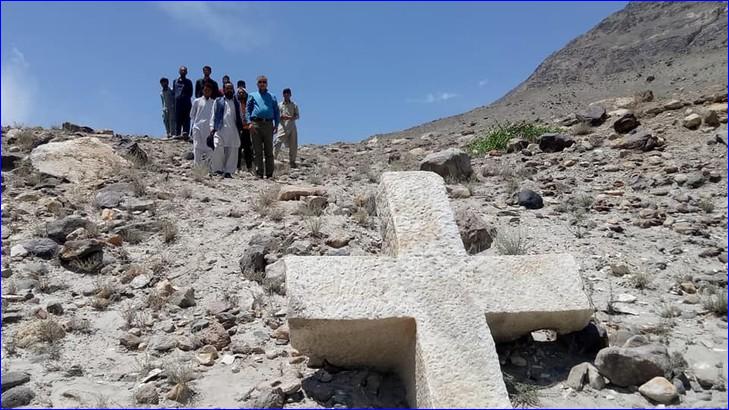


It is there, in the Karakoram mountain range, that three researchers from the University of Baltistan, in Skardu, accompanied by villagers and mountain guides, discovered a marble cross, measuring almost 2.1 m by 1.8 m and weighing between three and four tonnes. They found it two kilometers from the base camp, high up near the village of Kavardo, as they testified at a press conference on June 14.
Related: By Foot To China: Mission of The Church of the East, to 1400
The three researchers who visited the site are the vice-chancellor of the university, Muhammad Naeem Khan, the director of studies, Zakir Hussain Zakir, and the head of external relations of the university, Ishtiaq Hussain Maqpoon.
According to their first estimates, the "Kavardo Cross", as it is now called, is between 1,000 and 1,200 years old. But the University of Baltistan, which wants to continue research, plans to partner with European and North American institutes on the one hand, and local historians on the other, to determine the exact age of the cross, which is already "among one of the largest on the Indian subcontinent", according to Wajid Bhatti, another researcher from the University of Baltistan.
"Big news" for the Christian minority
This dating, if confirmed, would attest to the ancient presence of Christianity in the Himalayan region, which can only delight the Christian minority in Pakistan, so often discriminated against and abused. "This is really big news for all of us," said Caritas Pakistan general manager Mansha Noor. This shows that Christianity already existed in the region at that time, and that there must have been a church and Christian homes. Currently, no Christian family lives there, but this was clearly the case at the time. "
Related: The Monks of Kublai Khan
For his part, a Catholic banker from Karachi, Norman Gill, insisted that "Christians here can go to the site to see the cross, once all the formalities are completed". The vice-chancellor of the University of Baltistan, Muhammad Khan, in announcing the discovery of the cross, mentioned it as if it had "come down from the sky directly on the Karakoram".
The small town of Skardu is on the axis which today links Pakistan to China, and was once on the Silk Road. It is therefore possible, according to Béatrice Caseau, a teacher of Byzantine history at Sorbonne University, that "Christianity was brought to this mountainous region by Christian merchants from the Middle East".
"Even if we lack the sources to know with certainty where they passed, we know that Christians from the Persian world, using the Syriac language, came to the Indus region between the 5th and 8th centuries, until the arrival of Islam, continues Béatrice Caseau. Traces of "Nestorian" Christians have been found in China since the 7th century, and there were bound to be exchanges throughout the region, including on the religious level. "

or register to post a comment.